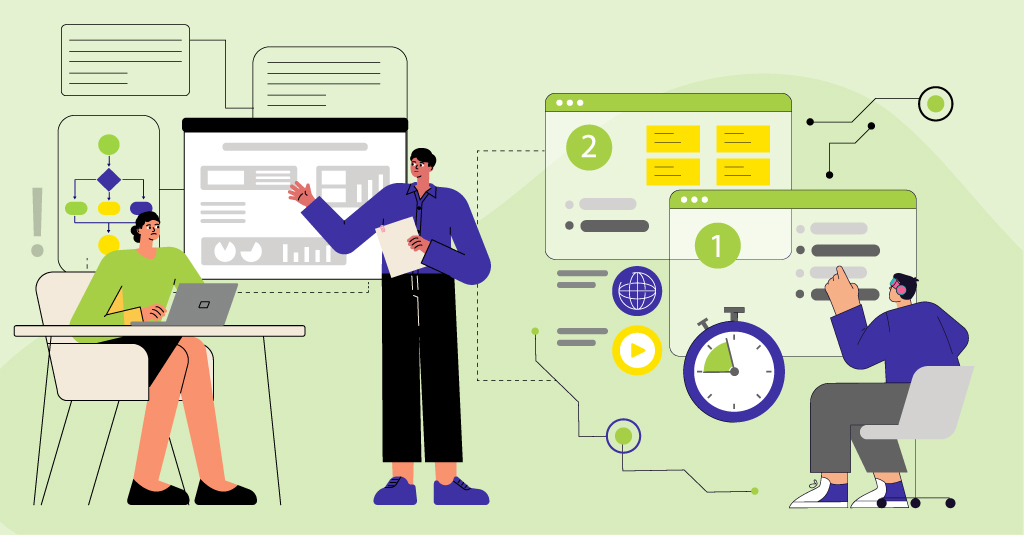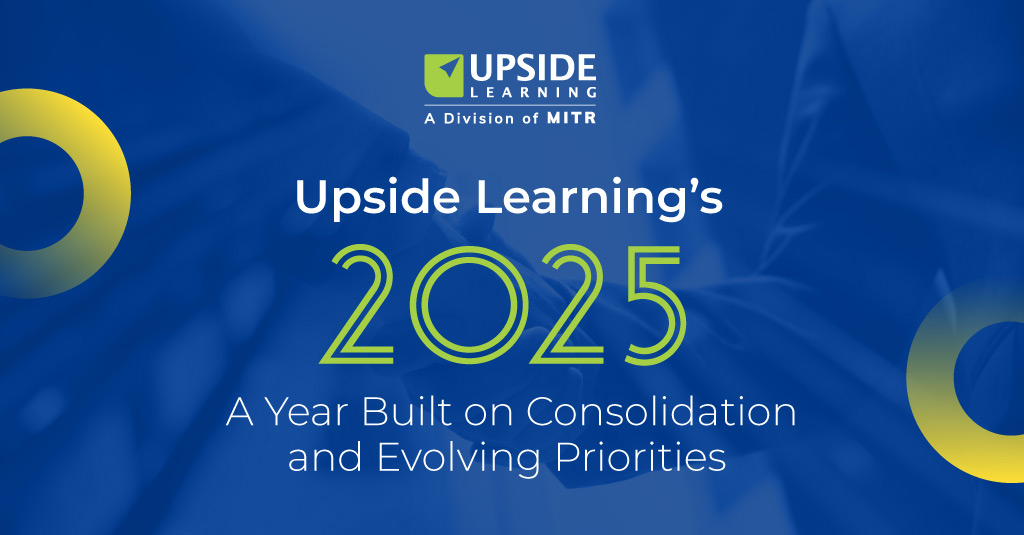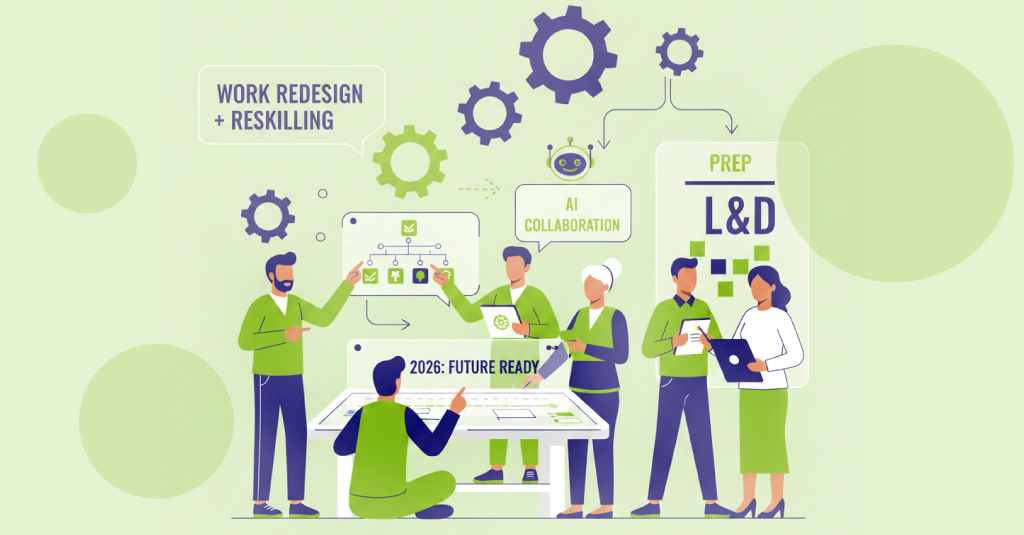
Introduction: The Goldfish Dilemma
Are you aware that the average human attention span has now decreased to a level lower than that of a goldfish? I’m not making this up; Microsoft actually researched it. Apparently, goldfish can focus for about nine seconds, and we humans? Just seven.
To be honest, it’s difficult to tell whether to laugh or weep, but if you’ve ever sat through a 90-minute corporate training on ’email etiquette’ while mentally planning what to prepare for dinner, you understand. Traditional learning just doesn’t fit how our brains work anymore.
That is precisely why I enjoy Microlearning and Just-in-Time Training; they are more than buzzwords; they are survival techniques in today’s distracted environment.

Why Just-in-Time Training and Microlearning Are More Important Than Ever
Consider this scenario: you’re at work, attempting to learn a new software. “The training is in the LMS, and it’s a 2-hour video!” explains your manager. How long is two hours? You have only two minutes until the next meeting.
When your brain decides to halt, microlearning and just-in-time training can help. It’s like having a wise buddy quietly whisper the correct response in your ear.

The Science Behind Our Shrinking Focus
So, why are people so easily distracted today? Researchers believe that our brains are overwhelmed. We get 34 terabytes of data per day in the shape of advertisements, emails, SMS, and reels. Not surprisingly, we keep checking our phones every five minutes throughout an hour-long class.
Microlearning provides the quick wins our brains require: brief, memorable hits of information that don’t overwhelm your brain or cognitive processes.

When Old-School Learning Flops (And Why It Happens)
Remember those all-day corporate training sessions with endless slides and cold sandwiches? Yeah… me too.
The problem with old-school learning is that it’s:
- Too long
- Too boring
- Too disconnected from reality
Learners want relevance, immediacy, and engagement, not 200 slides outlining business policies.

Microlearning: Your Brain’s Favorite Snack
Microlearning is similar to brain candy, tiny, sugary morsels of information that you may savor without going overboard.
Imagine receiving five brief, animated video that each focus on a single topic, rather than an hour-long cybersecurity snoozefest. You may still enjoy your coffee while watching them during your coffee break. Doesn’t it sound quite sweet?
It’s not only nicer; it’s wiser. According to studies, breaking down material into little pieces can increase retention by up to 20%.

Just-in-Time Training, Adaptive Learning
“Everyone has experienced it: something goes wrong at work, and all of a sudden, they ask themselves, ‘Okay, what do I do now?'” You need the solution immediately; you don’t have time to go through an entire training session.
This is the essence of just-in-time training: quick instructions, videos, or checklists that assist you immediately. It’s like Google for your job, instant answers when you’re stuck.
I once worked with a retail team that used short video guides on their phones to handle tricky customer situations. They didn’t need hours of training; they just needed the right answer right then. Problem solved, customer happy.

What Is the True Difference Between Just-in-Time and Microlearning?
Let me break it down:
Scroll right to read more.
Microlearning |
Just-in-Time Training |
|
|---|---|---|
| When? |
Scheduled, ongoing |
Immediate, as needed |
| What? |
General knowledge |
Problem-specific help |
| How Long? |
2–5 minutes |
30 seconds–2 minutes |
| Best For? |
Compliance, soft skills |
Quick fixes, troubleshooting |

Big Wins: How Microlearning Transforms Corporate Learning
Microlearning helps companies:
- Boost retention: People remember more when learning is spaced out.
- Save time: No more marathon sessions.
- Increase engagement: With interactive films, gamification, and real-world settings.
One customer we worked with reduced onboarding time by 30% simply by switching to microlearning. Less overload means happier, more confident new hires.

Just-in-Time in Action: Real-World Benefits
Just-in-time learning:
- Reduces downtime
- Cuts errors
- Empowers employees
Think of it like GPS for learning, nobody memorizes maps anymore, right? We all rely on guidance when we need it.

The Dream Team: Blending Microlearning and Just-in-Time
These two approaches are even better together. Use microlearning to establish core knowledge, and just-in-time to deliver rapid solutions.
It’s similar to going to the gym (microlearning) but with a personal trainer whispering recommendations throughout the workout (just-in-time). Best of both worlds.

How to Create Microlearning That Actually Sticks
Quick tips:
-
Focus on one concept per module.
-
Use visuals and storytelling.
-
Keep it short, ideally under 5 minutes.
-
Include interactions: quizzes, scenarios, reflection questions.
Storytelling makes everything stick. We once turned a dry compliance topic into a mini soap opera with fictional characters. Engagement shot up by 40%.
Building Better Just-in-Time Solutions
Steps to success:
-
Identify moments when employees get stuck.
-
Create simple, searchable resources.
-
Make it mobile-friendly.
-
Keep content evergreen, easy to update.

How Mobile Learning Turns Idle Moments into Learning Gold
Mobile learning is the glue that holds it all together. I’ve seen people do microlearning:
-
On the subway
-
While waiting in line for coffee
-
Between meetings
It’s the ultimate learning in the flow of life.

AI: The Secret Sauce in Personalized Microlearning
AI helps by:
- Recommending content
- Nudging learners
- Personalizing paths
It’s like Netflix but for your career growth.

True Stories: Microlearning That Made a Difference
- A retail giant saw a 17% sales boost using microlearning.
- A healthcare team reduced safety incidents by 22%.
- An IT firm slashed support calls by 25%.

The Bumps on the Road (And How to Avoid Them)
Common mistakes:
- Too much content at once (info overload)
- Poor design (boring visuals)
- Forgetting real-life context
Stay focused, keep it visual, and always tie learning to real-life actions.

How to Know It's Working: Measuring Learning Impact
Track:
Scroll right to read more.
| Metric | Meaning |
|---|---|
| Completion rates | Are people using it? |
| Retention | Are they remembering? |
| Time-to-competence | Are they applying it faster? |
| Business results | Is it moving the needle? |

Wrapping Up: How Small, Smart Actions Lead to Lasting Change
Ultimately, lengthy, snooze-worthy courses are not necessary for true learning. Just-in-time training and microlearning may help your employees learn more quickly, retain more information, and, let’s face it, yawn far less. It all comes down to providing people with the appropriate information at the appropriate time so they can apply it when it matters most.
And who knows? Maybe one day we’ll finally beat the goldfish.
With the use of research-proven learning psychology, science-backed tactics, and performance-measuring metrics, Upside Learning has been assisting businesses all over the world in reevaluating their approaches to learning so that every learning moment matters. Whether you need to upskill your employees, enhance onboarding, or create appealing compliance activities, our unique eLearning solutions are designed to have a noticeable, measurable impact.
Are you ready to use learning for the good of your staff and your business? Get in touch with Upside Learning right now to discuss how we can support you.
Frequently Asked Questions (FAQs)
Think of it as focused learning in small doses, quick to take in, fun to go through, and hard to forget.
Ideally, under 5-10 minutes, with others claiming 2-5 minutes is the sweet spot. However, these may be further broken down into little bits of batches of information, making it smaller.
Everyone, but particularly fast-paced areas such as healthcare, retail, and technology.
Not entirely, it complements longer learning by keeping things fresh and practical.
Mobile applications, AI-powered learning platforms, video clips, and infographics.
Engagement, retention, application, and real business outcomes are all influenced by the impact of learning.



















